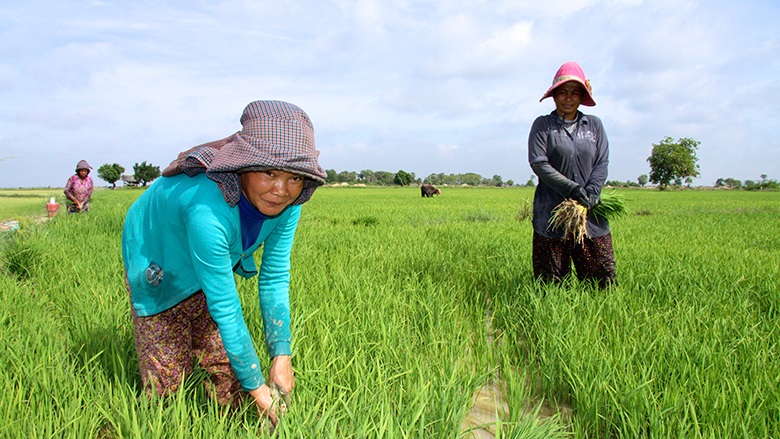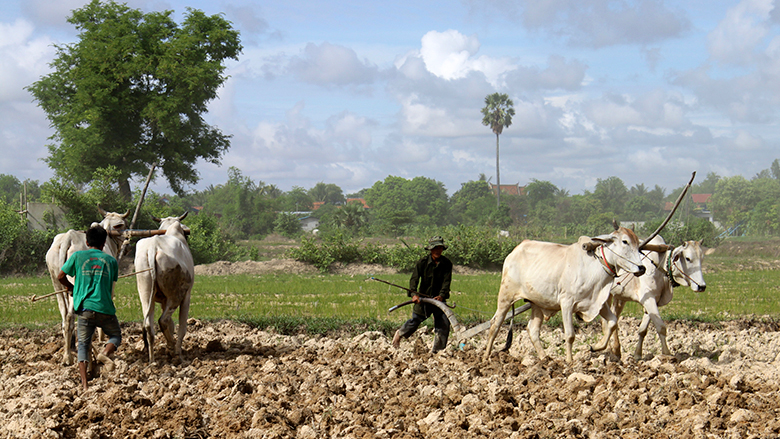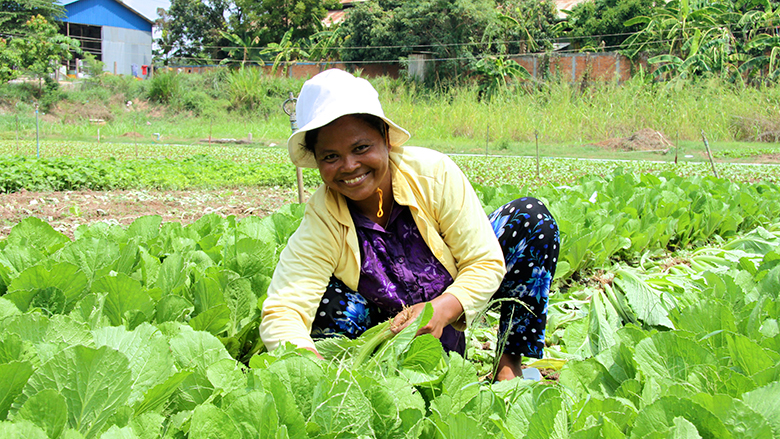The last decade was golden for Cambodian agriculture. The annual agricultural sector growth of 5.3% between 2004 and 2012 was one of the highest in the world, according to a new World Bank report, Cambodian Agriculture in Transition: Opportunities and Risks , prepared with the support of the Australian government.
Yields increased for all crops by 4% during 2004-2012. Farm production expanded at a competitive price level allowing Cambodia to increase its agricultural exports and successfully compete with producers in Thailand, Vietnam and Myanmar.
Life has changed for many Cambodian farmers, who have benefited from larger crops and higher rice prices over the recent years.
“My rice production has grown every year and brought in good profits,” says Mun Mom, who farms lotus on his land of two hectares and rents 13 hectares for growing rice. “I have used this money to expand my production and hire six people to work with me. I pay them $5 daily, and this is good money.”
Farm wages have doubled over the last decade, and are now better aligned with salaries in other sectors, according to the new report.
The success of Cambodian agriculture helped four million people out of poverty. The poverty headcount dropped from 50% in 2007 to 18% in 2012.
Although the focus of Cambodian agricultural production is still on rice, the last decade showed positive trends of altering production towards more profitable crops like vegetables, cassava and maize, and starting agricultural side-businesses to secure farm livelihoods and generate incomes.
“It is very important for farmers to have some other income in addition to growing rice,” says Leng Neath, a rice farmer who also raises 950 ducks. “Until recently I had three hectares for rice but this wasn’t enough to feed my family. I bought my first ducks a couple of years ago, and now sell about 900 eggs every day.”




